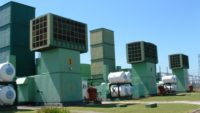Chinese firms NARI Group Corp. and Power China Guizhou Engineering Co. have been awarded an EPC contract to complete a 428-kilometer-long, 400-kV electricity transmission line in East Africa after bankrupt Spanish engineering and construction group Isolux Corsan pulled out.
The electricity transmission line in Kenya was 70% complete by the time the Spanish firm, which applied for bankruptcy in July 2017 over a $501-million debt it owed suppliers, ended its involvement.
The Kenyan government will finance the Chinese firms' contract. It is valued at $95 million, according to the Kenya Electricity Transmission Co., a limited liability state entity that acts as the country's transmission system operator.
The transmission line will upload electricity generated by the 310-MW wind farm in Loiyangalani district near Lake Turkana that is being developed by Lake Turkana Wind Power (LTPW), a consortium comprising KP&P Africa B.V. and Aldwych International as co-developers, Investment Fund for Developing Countries, Vestas Eastern Africa Limited, Finnish Fund for Industrial Cooperation Ltd., KLP Norfund Investments AS and Sandpiper. The approximately $690-million wind farm was completed in June 2017 after the 365 wind turbines from Vestas Wind Systems were fully installed.
Construction of the high-voltage line commenced in November 2015 with financing from the Spanish government under a guarantee issued by the Spanish Export Credit Agency CESCE, with the remaining portion funded by the Kenyan government. The line begins at Loiyangalani and will terminate at Suswa substation, the largest substation in Kenya, approximately 80 km northwest of Nairobi, the capital. It was initially slated for completion in January 2017.
The Chinese consortium has pledged to complete the project by August this year, three months after the deadline the Kenyan government had set for itself. Failure to complete the project by May would see the government approve a conditional provision in the agreement with LTWP that allows the project developer to surcharge a penalty of $56.2 million spread over six years but which is to be recovered from electricity consumers.


